10 ways to organize a playroom - clever design ideas for toys, books and all the random stuff your kid brings home
These 10 playroom storage ideas will make the nursery and kids' bedrooms more organised and accessible, boosting creativity with these expert solutions

Finding ways to organize a playroom feels like an endless task. Dealing with the constant flow of toys, books and odds and ends is - honestly - a parent's constant battle. So while we can't promise that these playroom storage ideas will keep turn your child into an angel who never makes a mess, they might make it easier to keep on top of things, at least.
The best way to start to organizing your kid's room ideas is to break the room into sections in your mind. Caroline Milns, interior designer at Zulufish, suggests informally separating the playroom into sleep, study and play zones. That way, at least, you know which corner every item should belong in.
Then of course, there is decluttering. 'First and foremost: less is more,' says Ursula Wesselingh, founder of children's design studio, Room to Bloom. 'Limit the amount of toys, books and craft materials on offer by rotating toys regularly and keeping things fresh. By default this makes it easier to keep things organized and tidy.'
10 ways to organize a playroom
1. Build cupboards in every corner
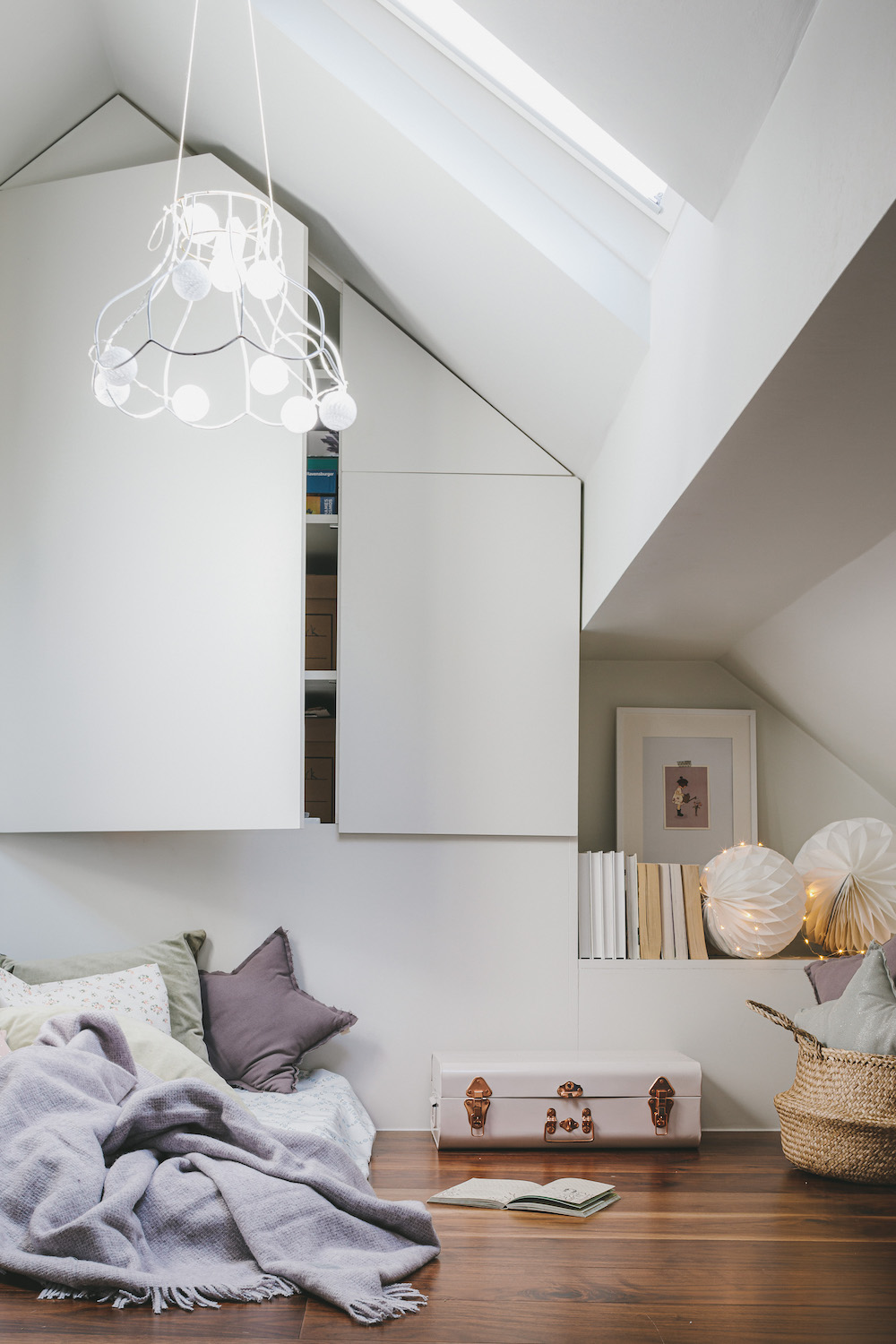
Utilising awkward spaces beautifully is where interior designers excel. If it's not already on your radar, bespoke storage is well worth considering when wondering how to design a kid's room as the advantages often outweigh the expense.
'With overflowing cupboards, it’s harder to see what you have and what kids might want to get out and play with, which stifles play and creativity,' says Ursula Wesselingh of Room to Bloom.
'A mix of open and closed, easily accessible shelves work best, in combination with containers and baskets with clear labels,' she says. 'See through containers are ugly but practical – so best stored behind doors.'
There are plenty of options out there when it comes to stylish toy storage, from baskets to shelves and multi-purpose pieces that double as a seat.
The Livingetc newsletters are your inside source for what’s shaping interiors now - and what’s next. Discover trend forecasts, smart style ideas, and curated shopping inspiration that brings design to life. Subscribe today and stay ahead of the curve.
2. Zone a specific space for crafting
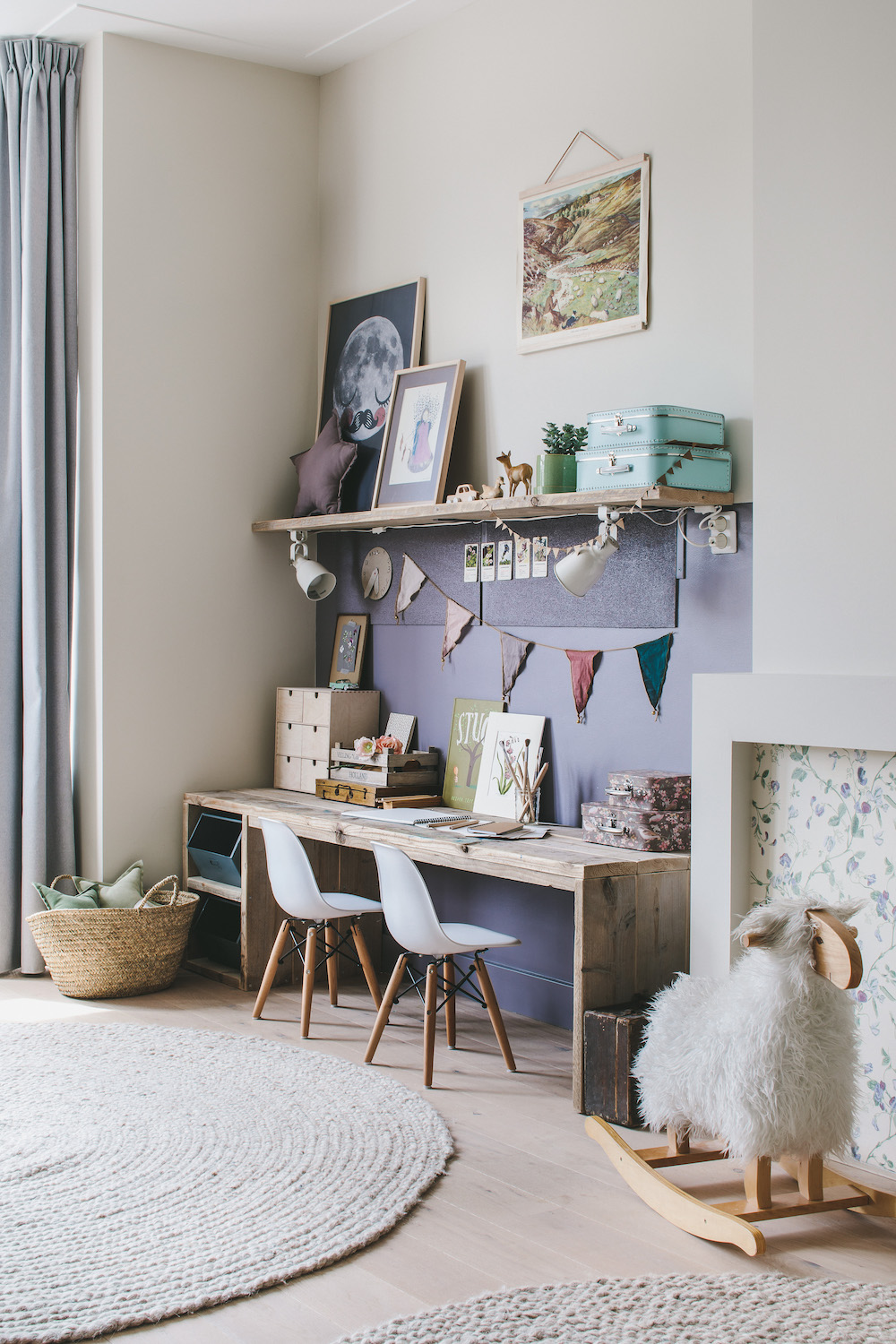
For kids to have somewhere to sit and paint, draw or enjoy other crafts is invaluable for their development. It's also a spot where their arts and crafts kits can be contained and kept together. If you have the space a wooden table can be a simple DIY project or a task for a local carpenter.
'A large table or desk with shelves and a display area invites children to get creative,' says Ursula Wesselingh, Room to Bloom. You don't even need to be a master at IKEA hacks to achieve this. 'The Ikea Trofast storage system with sliding trays that can be taken out of their casing is ideal for small things such as Lego and crafting materials. Keep small toys and craft items organised in labelled containers on easily accessible shelves, so children can see and find what they need.'
3. Make it multi-functional

Ample floor room is key when it comes to nursery ideas. Yet while a space for setting up train sets, dolls houses or hiding in wigwams is great, allow space for learning and hobbies too.
'When planning a playroom, it’s important to create a space that can serve many functions,' says Irene Gunter, founder of design studio Gunter & Co. 'For example, depending on the age of your little ones, a desk or small table with a comfortable chair will encourage homework, as well as arts and crafts.
Position these close to shelving complete with pull-out boxes to store all the necessary supplies. Reserve boxes at the bottom of the shelving unit for everyday essentials; this way, your children can easily and safely access what they need independently.'
4. Have plenty of open shelving
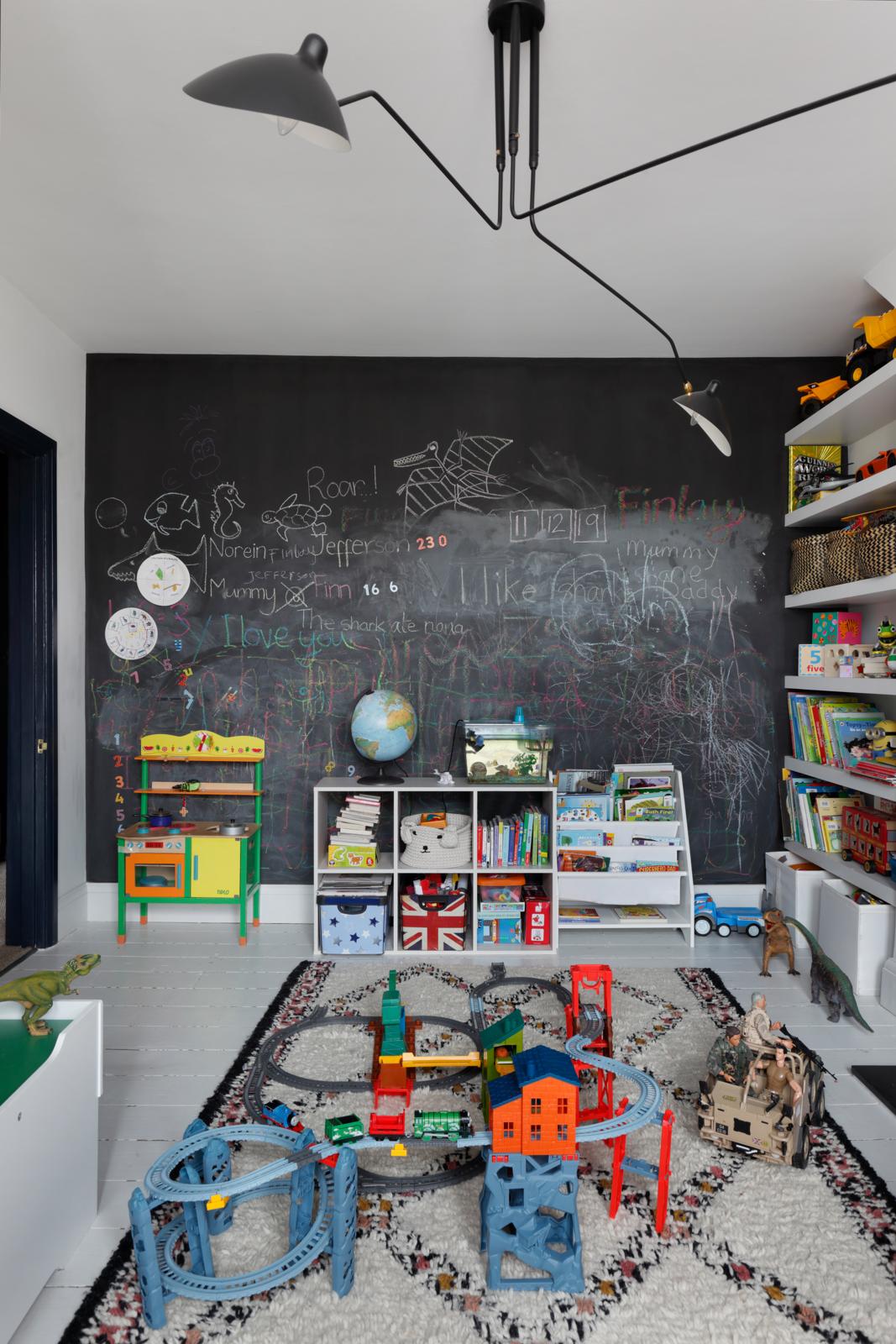
Kids are magnets for 'stuff' so it's easy for some toys and games to be put away, forgotten about and never played with. Kids' closet ideas tend to revolve around this truth. Having their things on display reminds them what is available and encourages them to play with it.
'It can be hard to anticipate which toys will become your child’s next favourite, but by opting for cube storage you can make sure that both the larger, bulkier toys and those that are more delicate can be stored away neatly and safely for a clutter-free play space,' says Alex Tolofson, Director and Co-Founder of Nöa & Nani.
'Picture ledges or shelves with added depth are great for showcasing books or cuddly toys, these can be rotated regularly to display your child’s favourite.'
5. Disguise out of reach zones
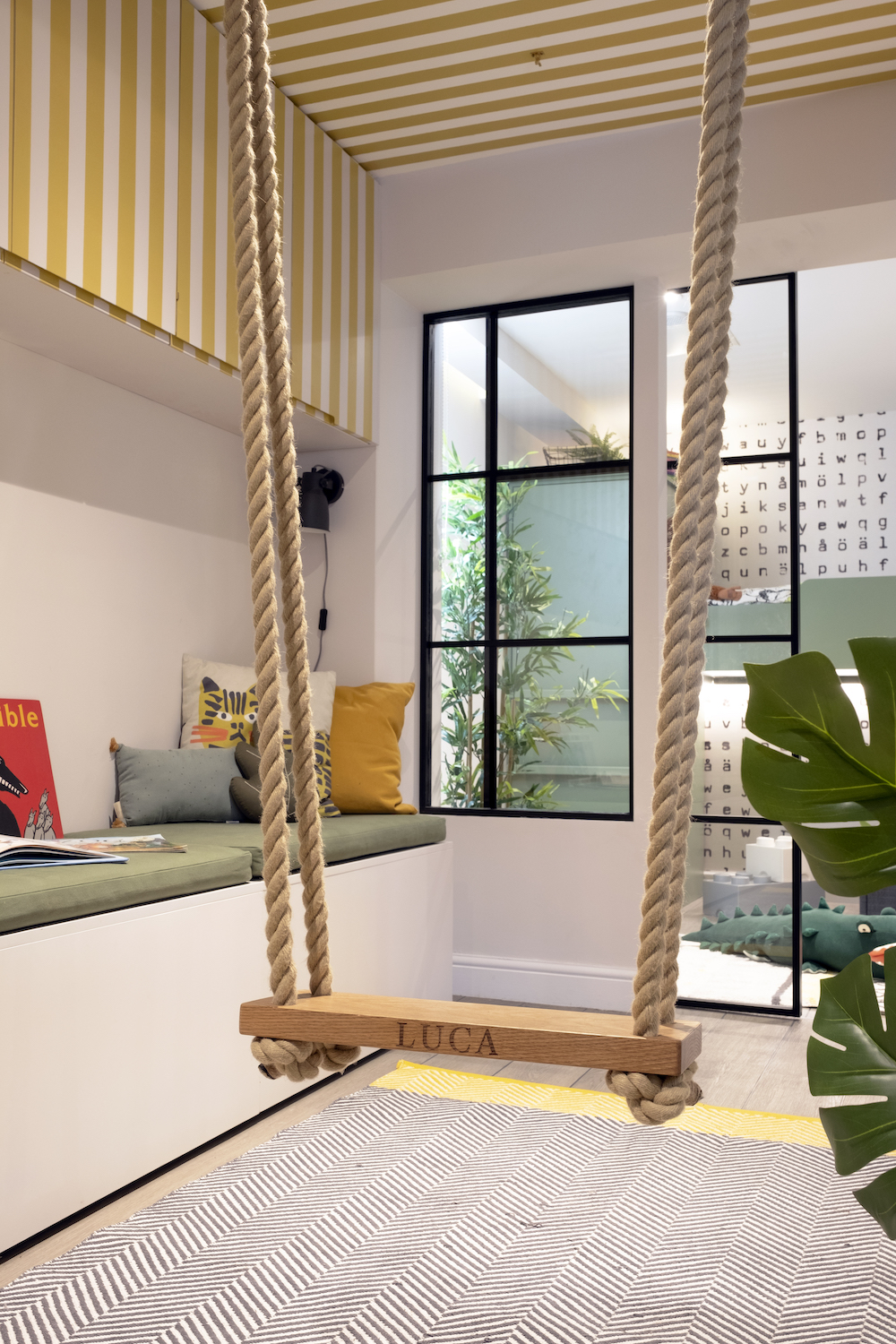
There may be toys and games that you'd prefer to be out of reach for younger siblings. Or successful playroom ideas often revolve around rotating what your kids play with. If that's the case a row of tall wall cabinets will provide a safe place that only adults or teens can access.
Disguise storage with a cool design like this fun striped ceiling that extends to the cupboards, by Anna Barber, founder, House of Kin.
'We divide toys into an ‘out of reach’ group and an ‘accessible’ group,' says Anna. 'If children have to ask you to access the messy toys then you can control the chaos a little more!'
Think about the volume of a room, not just about the floor space available. 'If you have a ceiling that is taller than the standard height, is there a way to add large storage drawers?' Anna asks. 'Perhaps under a built in "mini stage", or can you "harvest" some wall space from an adjoining room by building in storage and leaving the floor space free?'
6. Use calming colors and natural materials

Sugary pink for girls and bright blue for boys' bedroom ideas has never looked cool, so it's great to see a Scandi vibe take root with kids room ideas. Pale timber and natural shades feel cheerful without being over-stimulating. And if you can be thorough in the planning of storage from the start, the playroom is more likely to stay calm and organized.
'We love big pastel colours,' says Anna Barber, founder, House of Kin. 'Just because the room is for children doesn't mean it has to be bright red, yellow or blue.'
Sustainable living and renewable materials are rightly in the spotlight these days and always on our mind in everything we design.
'Before we begin, we make a list of everything that needs a space; board games, soft toys, lego, cars etc and then make sure everything has a home,' Anna says. 'It's so much easier to keep everything organised if it has a specific place to go.'
Large cupboards are great but only when used to their full potential. Use smaller baskets and boxes inside or on open shelves to store small items, for example all cars in one box, all figurines in another box. This helps to prevent wasted space.
7. Max space in steps and stairs
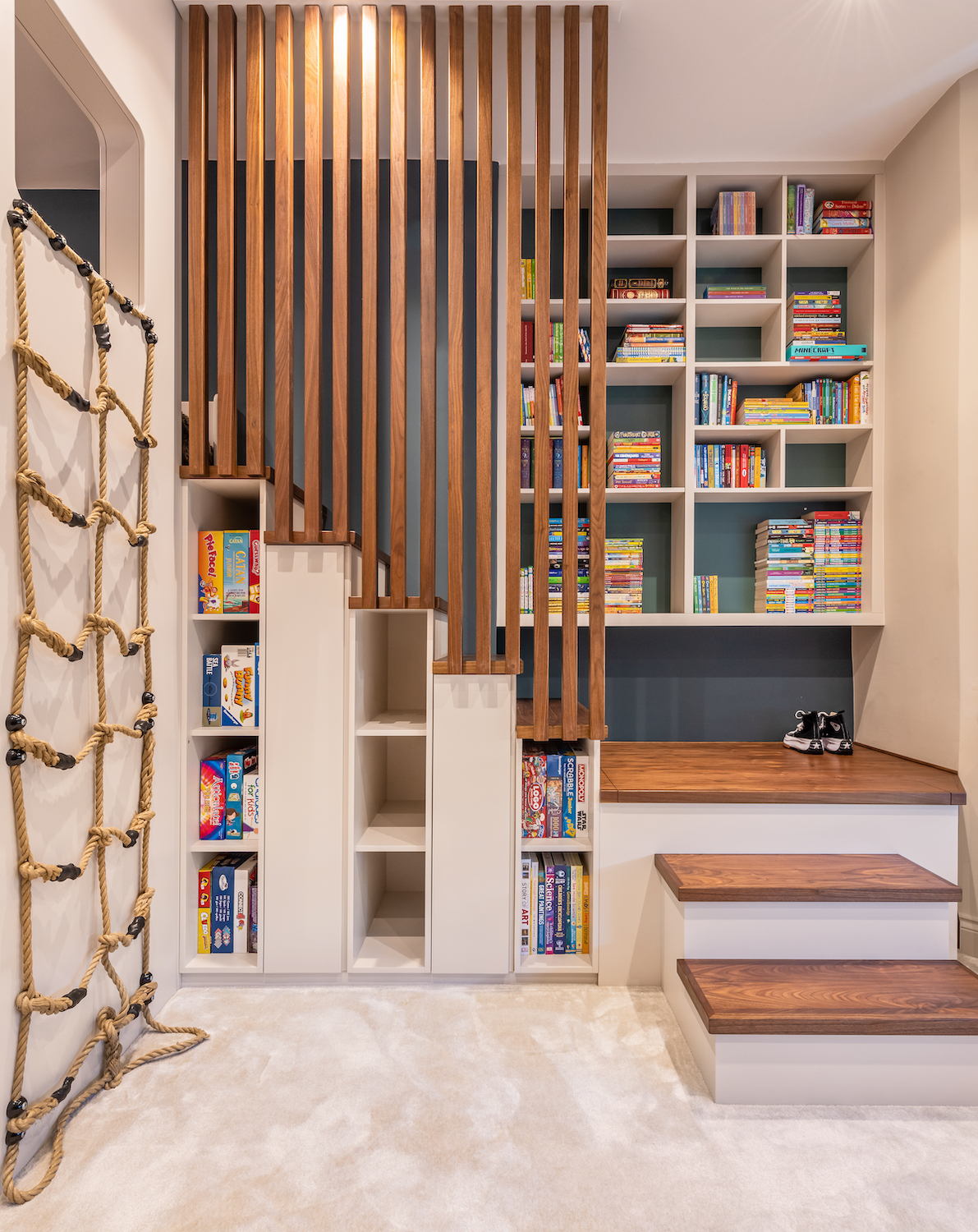
There was no shortage of space in this 7-year-old boy's room, meaning this can easily grow up when he starts thinking about teenage boy bedroom ideas. And that didn't stop Mandy Colliss, creative director of Funky Little Darlings, cleverly utilizing every inch.
'Storage for all his books and toys was critical and we covered pretty much every wall with floor to ceiling wardrobes, cupboards with open shelf display, book shelves, secret hidden storage in the stairs and also built under the steps,' says Mandy. 'It was an entirely bespoke job, so we were able to incorporate storage into absolutely everything.
We wanted this be a kind of self contained room: an all in one room that will last for years. A sofa bed at one end allows for relaxed seating and play at floor level whilst catering for sleepovers really easily.'
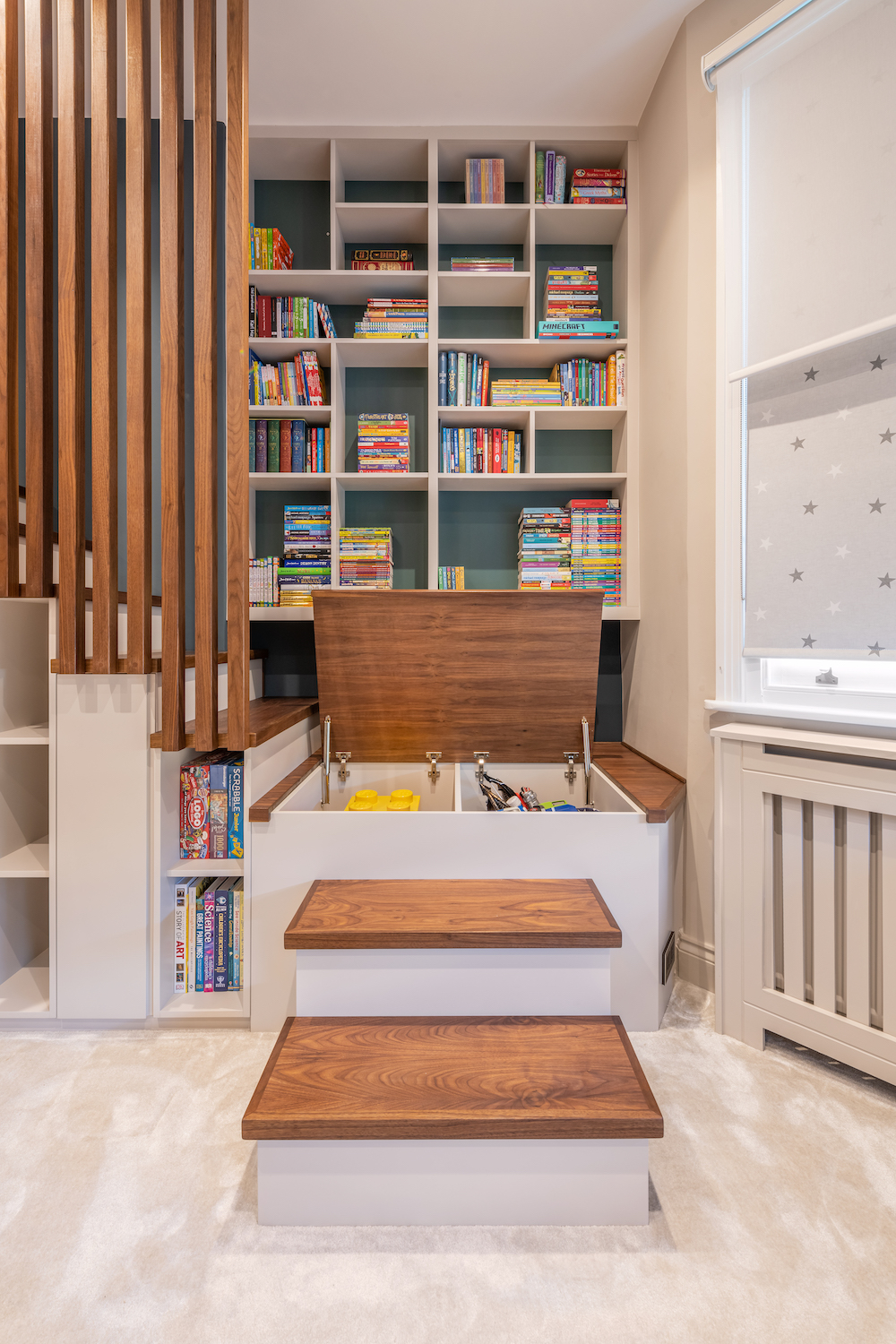
8. Go floor to ceiling

An alcove is a great spot to situate a desk, while built-in shelving up to the ceiling makes good use of the entire wall space. A magnetic board or cork board in between will give kids somewhere to pin photos and stickers.
'The more storage a room has, the more organised it will be. We like to make use of the walls with vertical storage solutions. The design can be funky, fun and colourful to appeal to children too,' says Caroline Milns, interior designer at Zulufish.
9. Combine storage with seating
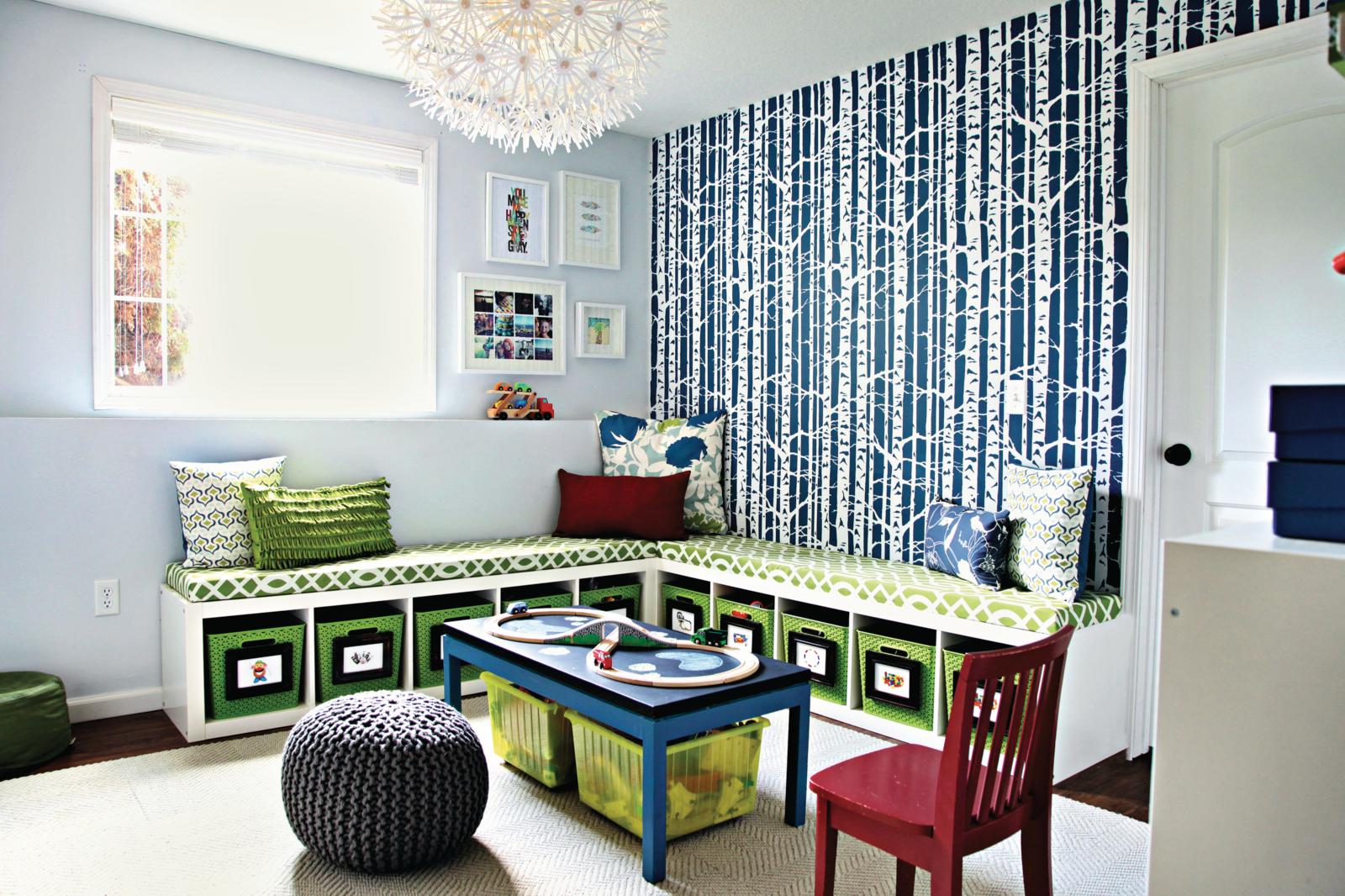
An ottoman style storage bench will see kids through from tot to tween years and provide somewhere for them to sit or lie and read. Once the structure is in place, the base can easily be painted and the seating cushions reupholstered, as they grow up. When they grow up, you can easily repurpose it into your living room ideas, too. How's that for sustainable?!
'Storage benches with pull-out drawers are multi-functional – they’re designed to be sat and stood on, as well as to store things,' says Irene Gunter, founder of Gunter & Co. 'Toys can easily take over if you’re not careful. Colourful boxes and drawers make it simple for your children to know what to stash where. Another option is to look for storage boxes on wheels. These are effortless to move around when you want (or need) to switch up the space.'
10. Include a fold away desk
A post shared by Nicki Bamford-Bowes (@andthentheywentwild)
A photo posted by on
The play area in this boy's bedroom by Nicki Bamford Bowes, founder of @thentheywentwild continues to work well as he grows up.
Designed three years ago when he was ten, the play zone has easily adapted to the start of his teen years. According to Nicki, the hidden desk which pulls out from the wall storage doors is now permanently up. At the same time, the built-in toy storage under the bed, is now home to sports equipment, 'silly amounts of trainers' and books.
It's a brilliant example of how cool and clever kids bedroom ideas can accommodate the different stages.
How do I maximize my playroom space?
'Consider how they will use the room; are they a reader or a builder? A painter or a footballer? How little ones spend their time can really help you decide what to store where, and how best to use the space,' says Anna Barber, founder, House of Kin.
'Think about the current age of the children and how long they will use that space for a specific task. If you can extend the budget to bespoke joinery you will always get more out of any room. Creating a storage area that for example doubles as a sleepover den, that has a desk for when they start studying, means you will get more out of it for longer.'
Ursula Wesselingh, founder of Room to Bloom offers some advice on organizing toys. 'Boxed games can be stacked on shelves so they are easy to get out. Dressing-up clothes can go on wall hooks, or dress-up rails, or be stored in a trunk or large suitcase,' says Ursula.
'Drawers are best for electronic games, cables and chargers. Musical instruments are great hung on walls or displayed on individual shelves. Soft toys and dolls are best kept in (large) baskets, and figurines in smaller containers or boxes.
Containers, boxes, trays that are labelled with what's in them and stacked on easily accessible shelves will make the space work better.'
How do you set up a playroom in a small space?
If your playroom is on the small side, or you need to set up a play area in a section of a child's bedroom or a guest room, multi-functional furniture is the answer.
'High bunk beds with stairs to go up, a slide the other side to come down and a den or desk underneath work well,' says Caroline Milns, interior designer at Zulufish.
'If your playroom benefits from a bay window, ask your designer to build in a window seat with storage underneath,' says Irene Gunter, founder of design studio Gunter & Co. 'Dress it with soft cushions and throws so that it becomes a comfortable spot for your kids to hang out.'
Arlene McIntyre, creative director at Ventura Design adds, 'Under the bed storage is a great way to allow for more space place for playing. As they grow up it can be somewhere for shoes, extra bedding, and any keepsakes to keep out of sight of younger siblings!'
Jacky Parker is a freelance lifestyle journalist and writer, producing a wide range of features for magazines and digital platforms. She has written for Livingetc and its sister titles, Homes & Gardens and Country Homes & Interiors for more than 15 years, both as a freelance contributor and as Acting Digital Editor and Acting Style Content Editor, regularly reporting on the latest interiors, gardens and wellness inspiration, speaking to experts in their respective fields, and discovering the best tips.
Jacky has also written for other publications, including Sunday Times Style, The Telegraph, Architectural Digest, House Beautiful, ELLE Decoration, Red, Grand Designs and more.